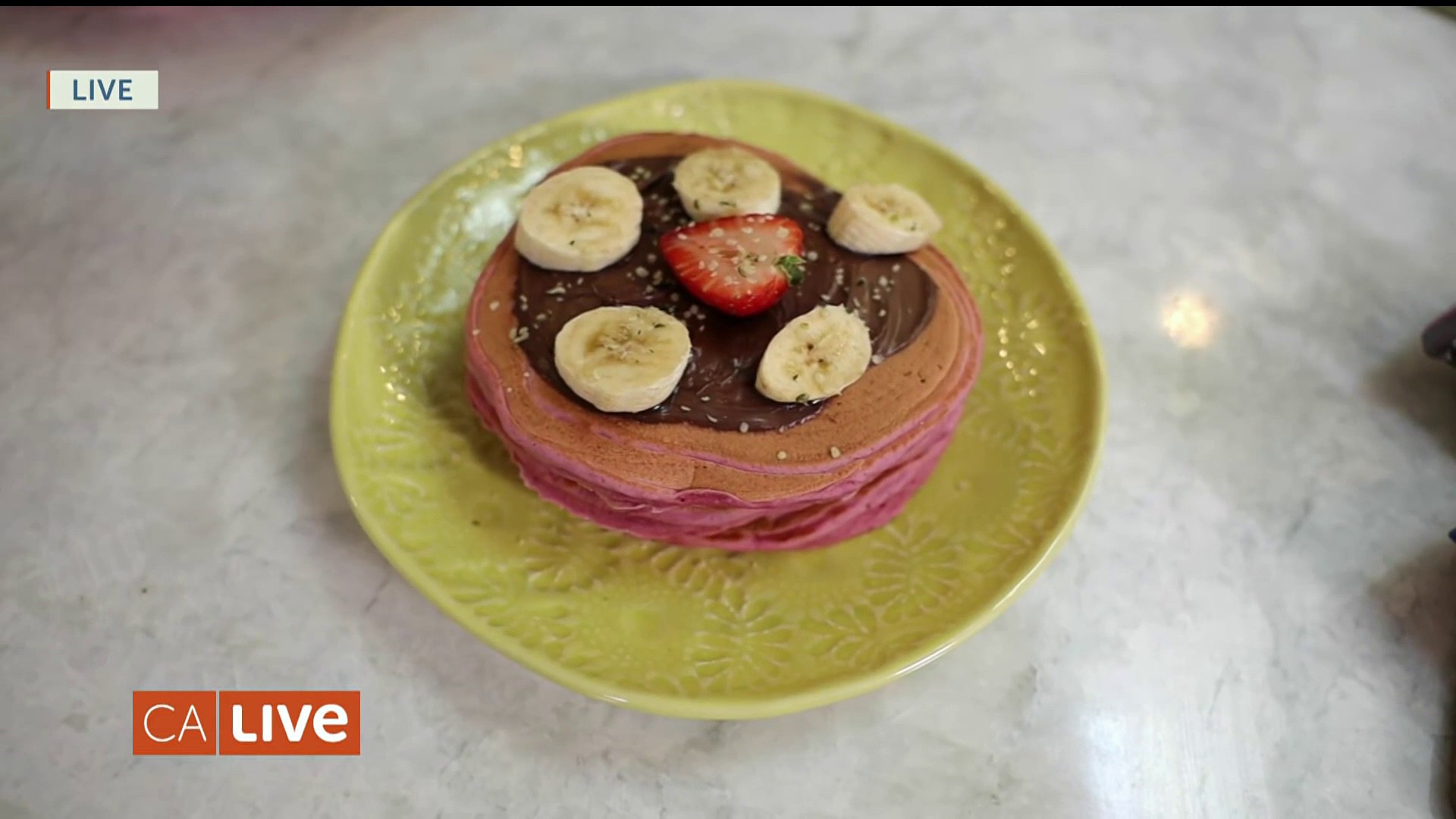California Live’s Jessica Vilchis is joined by Francesca Pittaluga, Italian-American entrepreneur and founder of the ready-made pantry sauce line ‘Ciao Pappy.’ Learn how to make the perfect pesto sauce, plus out-of-the-box ways to incorporate it into your home cooking.
Pesto Genovese
4-8 servings
Ingredients
Get top local stories in Southern California delivered to you every morning. Sign up for NBC LA's News Headlines newsletter.
- 2.5oz fresh basil
- 1 small clove garlic, chopped ½ cup
- Light Olive oil (not extra virgin is preferred)
- 1 cup freshly grated parmesan cheese
- ¼ cup pine nuts
- 1 tbsp unsalted butter
- Pinch of salt
Method
- Using a food processor, finely blend the basil leaves and the chopped garlic. When the basil is in small pieces, add the oil, blend briefly, then add the parmesan cheese. Blend for about 30 seconds. Add a pinch of salt to taste. Add the pine nuts and blend for about 30 seconds. Taste the consistency of your sauce, the pine nuts should have a sandy like a sand-like consistency and the flavor should be evident.
- The consistency of the sauce should be a runny paste, not too thick, not too thin. Add oil depending on how thin you want your sauce to be. Check for salt and add a pinch more if needed.
- Finally, the last secret. Add the butter and briefly blend until it’s all melted, about 15 seconds. The butter is not for flavoring the sauce; the purpose is to preserve the sauce’s bright green color.

*Bonus Tips*
- If you grow your own basil, religiously snip the germination at the top of a stem that will eventually turn into small white flowers. It improves the growth of secondary leaves and stems below the top of the plant and promotes a shift in the flavor of the leaves, from tender green pure basil flavor to a basil/minty flavor. Also, collect the leaves when they are not too big, the ones that almost shine as the small leaves tend to be more tender. No flowers in the plant and keeping the leaves smaller will raise your pesto several notches.
- Pesto sauce comes from the region Liguria, a narrow mountainous land that is protected by the rigid weather from the North and is warmed up by the Mediterranean Sea. The result is that the extra virgin olive oil in the region is very delicate and light. Its production is very limited, and almost totally consumed locally; so it would be difficult to find the Extra virgin olive oil from this area outside Italy, so it’s recommended using either a Light Extra Virgin olive oil or just the simple Olive Oil. A strong flavored olive oil may overwhelm the rest of the sauce.




